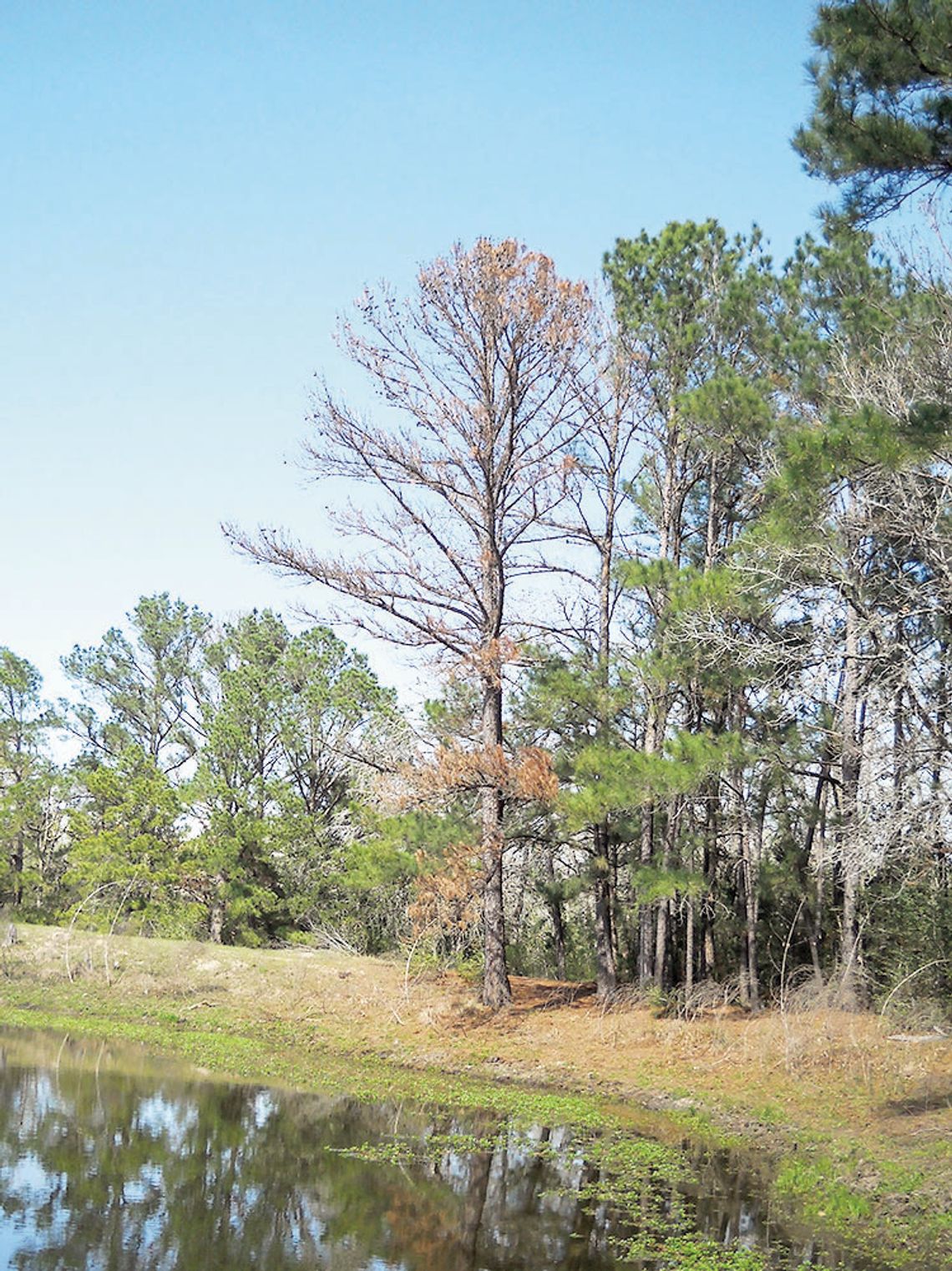COLLEGE STATION — With three consecutive years of severe weather conditions throughout Texas, including extended hard freezes and droughts, East Texas trees have become vulnerable to secondary threats. These threats include cedar bark beetles, Ips engraver beetles, Hypoxylon Canker disease and cedar rust fungi.
Trees experience threats like insects and diseases regularly, and when a healthy tree encounters these stressors under positive conditions, they can show little to no reaction to the threat. However, environmental conditions such as droughts, extreme winter weather and new construction development can add primary stress to the trees. As the trees encounter prolonged stress under these factors, they become more susceptible to secondary threats.
Ben Plunkett, Texas A&M Forest Service District Forester, explained that many secondary factors, like insects and fungi, can almost always be found in forests throughout the state, but healthy trees are not as threatened by them and do not indicate an infection.
“We can relate these secondary factors of trees to human bacteria,” said Plunkett. “If we cultured every tissue on our body, we would probably find bacteria, but it will only turn ‘toxic’ under certain conditions. Trees respond similarly in that weakened trees will see an increase in reaction to the fungi and insects.”
Environmental conditions can affect trees for years and decades to come. For instance, Plunkett noted that the droughts of 2011 and 2015 are still oppressing the surviving trees today.
Allen Smith, Texas A&M Forest Service Regional Forest Health Coordinator, reiterated this sentiment. “The trees are under such severe stress that it takes one little additional factor like a cedar bark beetle to push the tree into mortality,” said Smith.
Common fungi spread among cedars in Texas are cedar rust fungi. Most seen as cedar-apple rust or cedar-hawthorn rust, these fungi are not deadly but can cause irreversible damage. These fungi can cause leaf discoloration and “bleeding” cankers. Cedar-apple rust is recognized by its distinct reddish-brown galls around young branches and twigs that resemble the size of a golf ball.
Among the current most threatening fungi to weakened hardwood trees in East Texas is hypoxylon canker. Symptoms of hypoxylon canker can include browning of the leaves and sloughing of bark, which exposes a gray or black fungus on the sapwood of the stem or major limbs.
Threatening insects to weakened trees currently include Ips engraver beetles and cedar bark beetles. Symptoms of Ips engraver beetles occur in pine trees and include discolored crowns, dying branches and numerous white to reddish brown pitch tubes on the bark. Adult Ips beetles are cylindrical, measuring approximately 3/32” in length with a black to reddish brown color.
Symptoms of cedar bark beetles occur in cypress and juniper trees and include the discoloration and dropping of leaves; twig and branch decline; and small exit holes present on the bark of trunk or limbs which are sometimes accompanied by “sawdust” around the boring or tree. Adult cedar bark beetles are about the size of a grain of rice with cylindrical bodies and a reddish back.
In closing, Smith noted that many of the trees that appear to be dying may experience significant recovery this spring. The warmer, wetter and more stable weather conditions of the spring will take environmental stress off the trees, allowing them more strength and immunity toward secondary factors.
If Texas residents notice repeated or widespread tree abnormalities in their community, Texas A&M Forest Service local foresters are able to inspect and address specific concerns. Find your local forester here: https://tfsweb.tamu.edu/contactus/location-search/
“The trees are under such severe stress that it takes one little additional factor like a cedar bark beetle to push the tree into mortality.”
Allen Smith, Texas A&M Forest Service Regional Forest Health Coordinator
.jpg)



